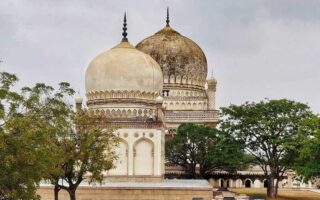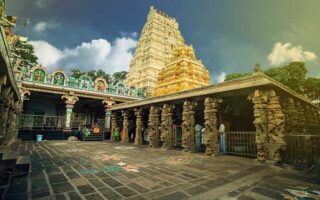The deep and dense forests of this state are one of the best habitats for all the wild animals. The immense wildlife sanctuaries extends tourists brilliant opportunity to spot endangered species and peek- a-boo to their natural habitat. A trip to all the wildlife sanctuaries teaches us the importance of these exotic wildlife in preserving balance in eco system and how to safe these exotic parks from depletion of their numbers.
A safari in any of the Andhra Pradesh Parks will help you to know its richness in flora and fauna. You can spot all the possible wild animals very closely. Some of the major wildlife sanctuaries of Andhra Pradesh comprises of Coringa National Park, Alisagar Deer Park, Indira Gandhi National Park Vishakhapatnam, Eturnagaram National Park etc. All parks are located in different locales, climatic conditions and landscapes depending on the type of birds and animals placed there.
Papikonda Wildlife Sanctuary
- Situated: 50km away from Rajahmundry, spreads over 3 districts OF West Godavari, Khammam and east Godavari, (Andhra Pradesh) India.
- Area: 591sqkm
- Apt time to visit this place: (November – June)
- Founded In the year: 1978
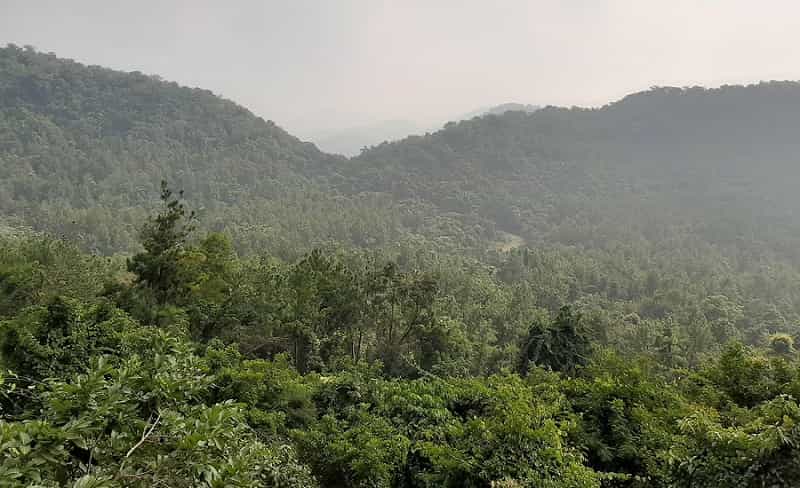
Papikonda Wildlife Sanctuary is situated in 3 districts-East Godavari, Khammam and west Godavari. This wildlife sanctuary is 50kms away from Rajahmundry and covers an area of 591sqkm.This sanctuary lies on the left side of the Godavari River.
Multifarious and varied streams exhaling from the top of the hill makes the forest of Papikonda a fertile vegetative land. All these added content makes this area a typical facinal, geomorphological and ecological zone.
Flora
The variety of species found here are Terminalias, Latifolia, Albizzia Lebbeck, Bambusa Arundinacea, Dendrocalamus Strictus, Lagerstroemia Lanceolata, Tectona Grandis, Albizzia Amara, and Lanceolata.
Animals Home
The natural habitat of this sanctuary is suited for the animals like Muggers, sloth bear, jackals, panthers, tigers, hyena, four horned antelopes, spotted deer and the extinct gharials. A varied variety of migratory and resident birds are also found here on the banks of Godavari River.
Other Attractions:
There is a hill reserve forest over here, which is known as “Rekhapalle”. This hill reserve is of great mythological significance as this place is said to be the ape kingdom of Ramayana. A visit to this place is a must to have an enthralling experience of the nature. Papikonda Wildlife Sanctuary also houses a museum and an environmental education centre.
Accommodation
Accommodation is readily available at Maredumilli, Rajahmundry and Kannapuram.
- Also Read:Famous Museums in Andhra Pradesh
Pulicat Sanctuary
- Situated: 60km north side of Chennai, Nellore District, (Andhra Pradesh) India
- Area: 500sqkm
- Apt time to visit this place: (October – March)
- Popular lake for: 2nd biggest saltwater lagoon in India.
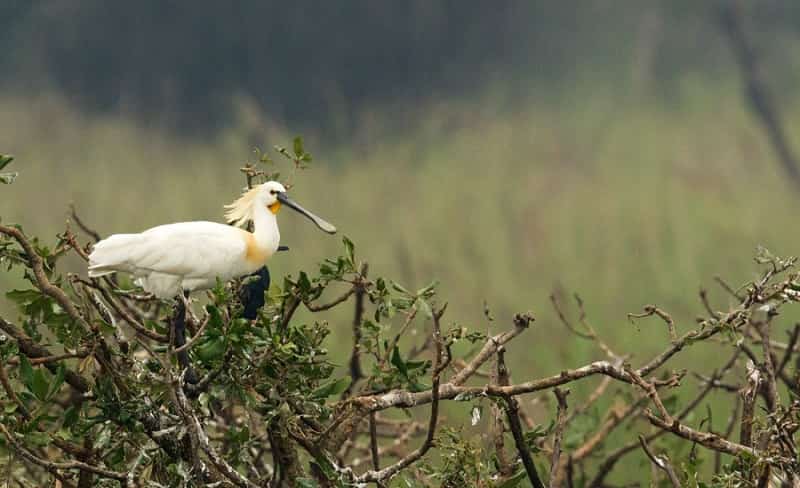
Pulicat Sanctuary is situated 60kms away from Chennai, disseminating over Tamil Nadu and Andhra Pradesh. Pulicat Sanctuary covers a total area of 500sqkm. Pulicat Sanctuary is popular as the 2nd biggest salty water lagoon of India by the coast of Bay of Bengal. The backwaters of the sprawling sea clings many migratory birds every year and is a popular breeding and feeding ground for different terrestrial and aquatic birds.
Flora
Pulicat Lake is the main source of livelihood for those residing in the neighboring thirty villages and sixteen islands boosting rich biodiversity. Pulicat Sanctuary boasts southern tropical dry evergreen forest with species like trychnos Nux Vomica, Xylocarpus Moluecenix, Avicennia officinalis, Pterospermum suberifolium, Manilkara Hexandra, Degiceros Conrniculatum, Ficus Tsiela, Excoecaria agallocha, Acanthus ilicifolius, Manilkara Hexandra, Rhizophora Apiculata, Dryopteris Sepiata, Glaucum etc.
Fauna
This Sanctuary is known for the habitat of the Flamingos as every year approximately 15,000 Flamingos visit this sanctuary. Other Birds like Open Billed Storks, Cormorants, Reef Herons, Sand Pipes, River Term, Grey Herons, Shoe Vellers, Pelicans, Spoon Bills, Reef Herons, Egrets, Pintails etc.
Invertebrates like Mollusks, Prawn and Plankton and 65 different species of fishes like Silver Promphets, Sargin Fish, Black Pomfret, And Sable Fish can be spotted here. Reptiles like Russel Viper, Krait, Monitor Lizard, Cobra and Calotes etc.
Accommodation
You can stay at Inspection Bungalows available at Tada and Sullurpet.
Shivaram Sanctuary
- Situated: Adilabad District, Telangana, India
- Established in the year: 1987
- Attractions: Fresh water crocodiles
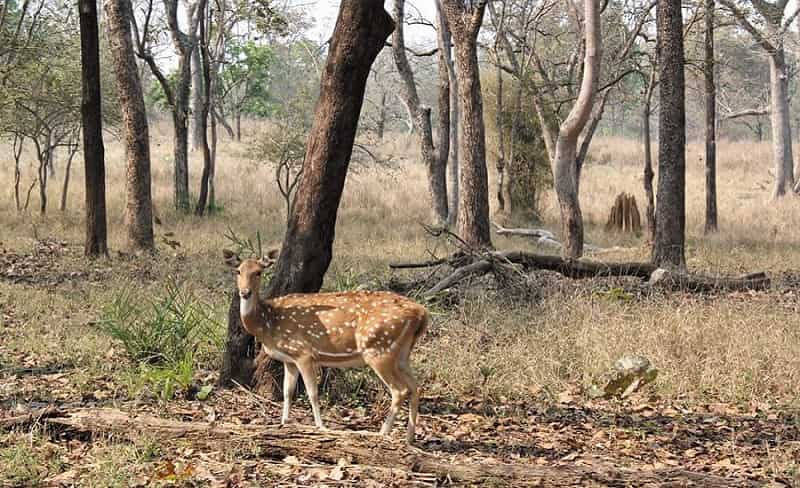
Shivaram Sanctuary is a delight for all the nature lovers. Placed over the banks of Godavari River, Sivaram Sanctuary is well known for its reserve of freshwater crocodiles and is totally immersed in Mother Nature’s splendor and beauty. This sanctuary covers an area of (36.29sqkm) and lays at a constant distance of 50kms from Mancherial, 80kms from Karimnagar and 10kms from Manthani.
Shivaram Wildlife Sanctuary preserves extensive range of fauna and flora in India. This sanctuary reinforces deciduous type of vegetation that comprises of Gumpena, Kodsha, Timan, Terminalias, Thorny shrubs and Teak. You can find animals like Cheetal, Nilgai, Sloth bear, Rhesus monkey, Cheetal, Chausingha, Python, Langur, Tiger, Nilgai, Sambar etc. The wildlife sanctuary was established in the year 1987 for safeguarding the population of crocodiles.
As this sanctuary is known for its species of crocodiles, you can spot innumerable number of crocodiles enjoying the comfort under the sun. Mugger Crocodile can be spotted in River Godavari. The unique feature about this crocodile is that, this species can cover significant distance on the land.
This is the best place to visit during the winter season, as the climate is refreshing for the tourist as well as tourists. You can hire jeeps and caravans for jungle safari and adventurous expeditions.
- Also Read: Forts and Palaces of Andhra Pradesh
Alisagar Deer Park
- Situated: Nizamabad District, Telangana, India
- Established in the year: 1985
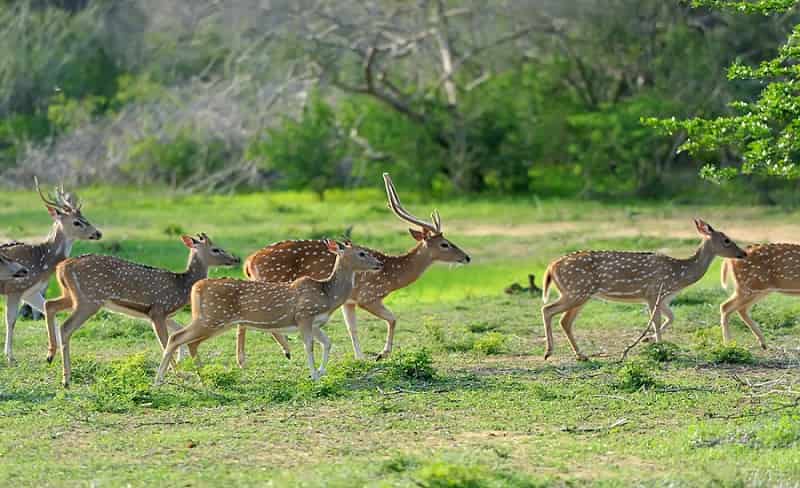
The Nizamabad district of (Andhra Pradesh) abodes a beautiful Deer Park called as Alisagar Deer Park. Alisagar Reservoir was built by in the year by 1931 by Nizam. Bordered by beautiful flower a Garden, natural hillocks and lake, this park is an apt park.
Alisagar Deer Park is located close to the reservoir which hosts number of deer species. This place is a popular picnic spot.
Accommodation
Much accommodation options available.
Gundla Brahmeswara Sanctuary
- Situated: Between Prakasam and Kurnool district, Andhra Pradesh
- Area: 1194sqkm
- Apt time to visit this place: October – May
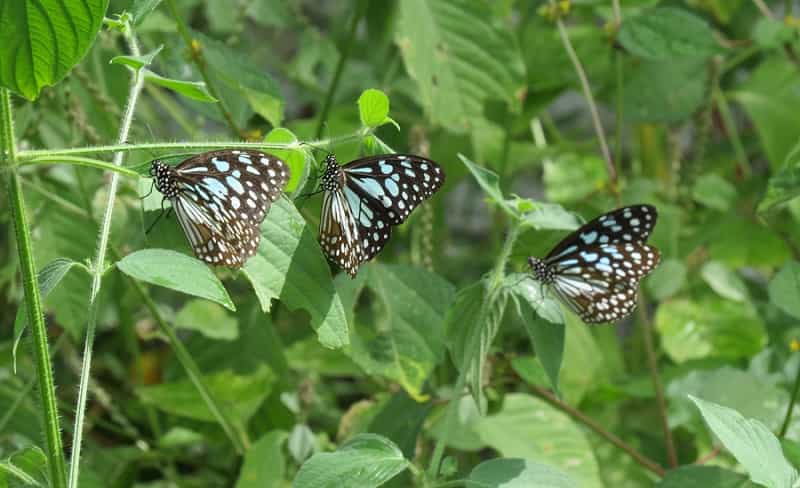
Gundla Brahmeswara Sanctuary lays between Prakasam and Kurnool district covering a distance of 30km.This sanctuary is a deciduous forest, with trees like Terminalia, Dalbergia, Bamboo, Anogeissius, Prerocarpuss, Albizzia, Boswelia, Andug and Shisham. This wildlife sanctuary is located on the plateau of Gundla Brahmeshwaram that runs in the south north direction of the Nallamallai hill range and also includes green plateaus and lovely valleys. Gundlakamma River which is a perennial River divides the sanctuary in to two parts. Also provides water to the inhabitants of the forest and makes a huge difference in the topography of the forest. This sanctuary house a variety of habitat.
Fauna
Wild Dog, Tiger, jungle cat, Sloth Bear, Pangolin, Nilgai, Chinkara, Marsh Crocodile, Mouse Deer, Chousingha, Hyena, Bonnet Monkey, Sambar, Monitor Lizard, Tiger, and Python are found in this tropical wildlife sanctuary. The best time to visit this sanctuary is between the months of October to May as the climate is pleasant and the animals most of the time remains outdoor.
Accommodation
Accommodation is not a problem as this wildlife sanctuary is visited frequently by the visitors.
- Forest Rest House, Diguvametta.
- Inspection Bungalow, Nandyal.
Kolleru Bird Sanctuary
- Situated: Close to Eluru and is 60km away from Vijayawada, Andhra Pradesh, (India)
- Area: 673 sq km
- Apt time to visit this place: November – March
- Popular as: The biggest freshwater lake in India.
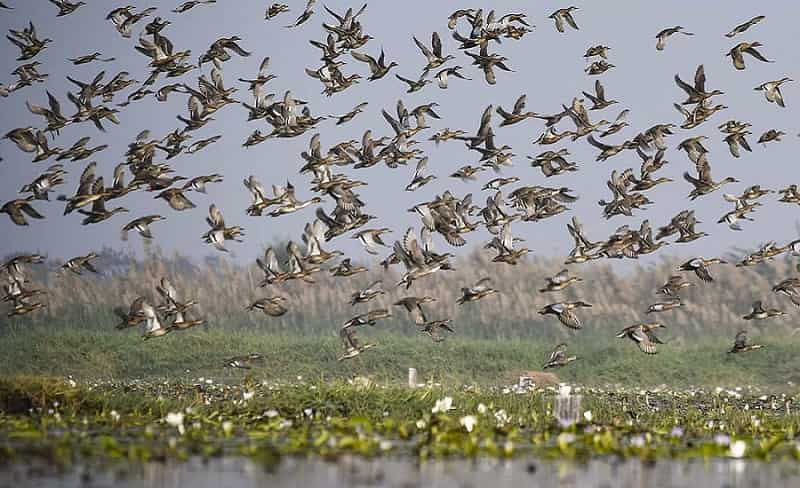
Kolleru Bird Sanctuary is situated 60 km away from Vijayawada close to Eluru, Andhra Pradesh. Kolleru Bird Sanctuary has the biggest freshwater lake in India. This sanctuary covers an area of 673sqkm also depending on the spread of water of marshes and wetland that surrounds the Kolleru Lake, within the Godavari and the Krishna deltas.
Kolleru Lake is so beautiful that it is described as “Birds Heaven and Peerless Fisherman’s Paradise” in the (imperial gazetteer).This lake gets water from 4 rivers namely Tammileru, Errakalva, Budameru, 18 drains and Ramileru. This lake flows down to the Bay of Bengal, this process is done every six months through an outlet Upputhara.
Flora
The Flora found here is quite interesting as there are many aquatic weeds like Water Hyacinth, Typha, Ipomea Aquatics, Pharagmites, Ottelia and Scripus. And trees like Coconut, Rain Tree, Prosopis, Babul, Palmyrah and Albizia trees.
Pelicans Oasis
Kolleru Lake has a rich diversity and high content of fishes that attracts the birds in high number. Pelicans come here during the nesting and breeding season to bring up their younger ones. You can hear the babbling of the Pelicans if you visit this sanctuary during the winter season. Apart from this bird, you can find white ibis, egrets, pond herons, grey herons and many water birds and migratory ducks.
Aquatic Life
Invertebrates like Molluscs and Crustaceans and sixty-three fish species belonging to twenty-nine families are found in this lake. Major ones are Valugah, Korramenu, Bangaru, Teega, Gurak, Jella, Boccha, Bommidaya and Ingilayh. Bommidaya and Ingilayh are 2 species, which are under risk of extinction.
Fauna
Birds like Pintails and Teals are the major ones and other species include cormorants, glossy ibises, shoveller, moorhens, painted storks, white ibises, coots, jacanas, reef herons, egrets, terns, and coots etc are found in this bird sanctuary.
Accommodation
Accommodation is not a problem as there are many hotels at Vijayawada and you can stay at the Forest Rest House at Eluru and Vijayawada.
Mahavir Harina Vanasthali National Park
- Situated: 15kms away from heart of Hyderabad City, Telangana, India
- Area: 189hectares
- Famous for: Black bucks
- Timings: (9.00am-5.00pm) Mahavir Harina Vanasthali National Park is accessible everyday apart from on Mondays.
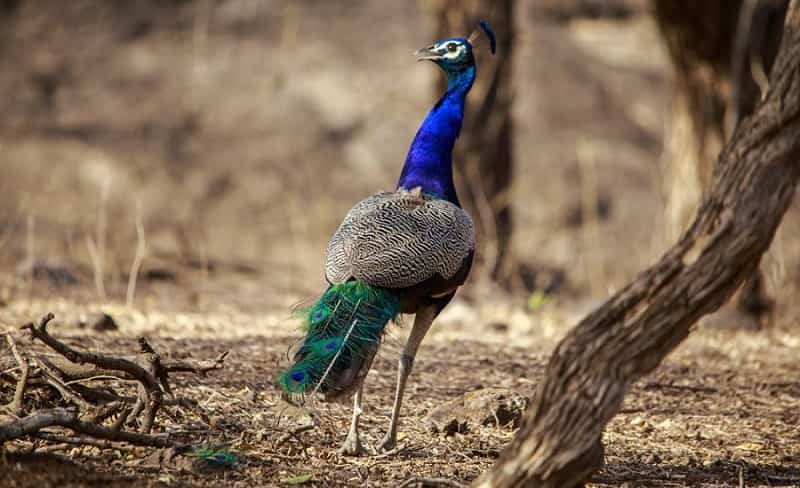
Mahavir0 Harina Vanasthali National Park is situated in Vanasthalipuram and is approximately about 15kms away from the heart of the main town. It is a specialized deer park and is 1 of the major tourist attraction. This park is maintained by Forest Department of Andhra Pradesh.
This place was a hunting ground for the Nizam’s and now is dwelling place for black bucks and many species of colorful birds. This park boosts a rising and falling terrain of approximately 189hectares subjugated by acacia. In the rainy season this park is at its best as the atmosphere and the surrounding is just splendid with white and golden flowers on the dark green mattress of grass.
The black Bucks and the Antelopes are endangered species. So now you know where to head to sight these beautiful spiral horned species. Another unique feature about this deer’s is that their horns are everlasting and does not shed unlike others. Black Bucks are known as the state animal of this state and called as Krishna Jinka.
Fauna
Mahavir Harina Vanasthali National Park offers the needed secure shelter necessary for the survival of the black bucks. It also houses to a number of different bird species, and egrets, cormorants, Kingfishers, pond herons, can be viewed more or less always. Moreover if you are lucky enough, you can also sight black bucks, factually locking horns within a fight for a count of striking does.
Accommodation
Hyderabad boosts number of hotels you can choose from.
Nehru Zoological Park, Hyderabad
- Location: Hyderabad, Telangana
- Area: 400 Acres
- Significance: It’s the first time in India to have Lion and Tiger Safari
- Recommended time to visit: Round the year
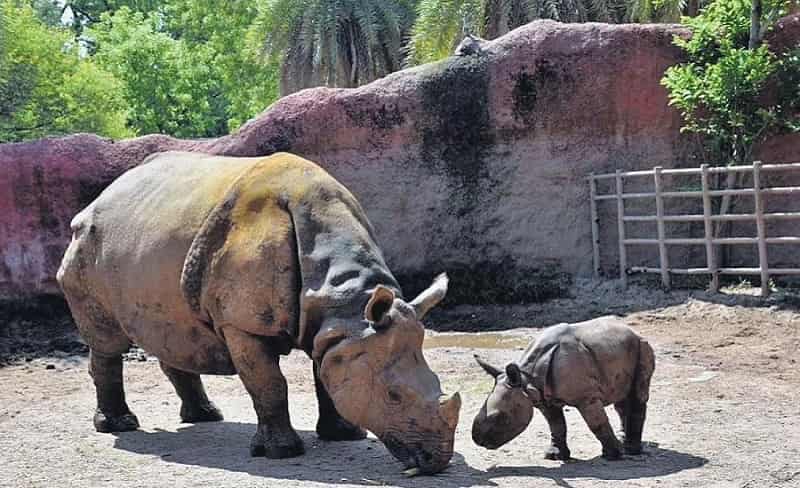
The Nehru Zoological Park is placed in Hyderabad and in 1963 of 6th October; the park was open up to public. This park covers the area of 400 acres and is also considered the most famous spot for picnic for the cities like Hyderabad and Secunderabad. It has got a prehistoric animal section, which house animals not normally seen during the day. To view these rare nocturnal animals and birds like Lorises, Civets, Bats, in the daytime, a special system of lighting, which simulates bright moonlight, is arranged. Other attractions are mini train, animal rides and gardens etc.
Safari Expedition: Being the largest zoo of Asia with more than 250 species, Nehru Zoological Park has the first Tiger and Lion Safari in India. There is a Natural History Museum interior of the Zoo. The landscape in the zoo gives a natural look for the habitants in the enclosing.
Mir Alam Tank : There is the lake in the centre of the Nehru Zoological Park, called as Mir Alam Tank. This is the drawing card of many birds of the area. Here you can have a look at the wide array of birds like Flamingos, Peacocks, Parrots, Pigeons, Love-Birds, Pied Horn Bills, Buntings, Flinches, Storks and Doves.
Fauna: Primates like Chimpanzee from Central Africa, Mandrill, Orangutans, Chacma, Olive and yellow baboons that are in open islands etc. and Indian primates include Rhesus, Bonnet, and Monkeys with stump-tailed, lion-tailed and pig-tailed, Golden and common langurs are housed in the zoo.
Carnivores like African and Indian lions, Tigers, panthers, jackals, wolves, hyenas, bears etc and reptiles like Giant/ Star tortoises, water turtles, Estuarine crocodiles in open pools, Monitor lizards and chameleons share enclosures, hooded Indian Cobra, Russels Viper, Giant rock-python, tree snakes etc are all found in the zoo.
Elephants, Rhinoceros, Hippopotamus, Zebras, American bison, Antelopes, Black buck, Chousingha, Chinkara, Deer, Sambhar, and Brow Antler Deer etc. are the herbivores you can enjoy watching. All this are also a part of the Nehru Zoological Park.
Coringa Sanctuary
- Situated: 20kms away from Kakinada and 70km away from Rajahmundry, Andhra Pradesh, (India)
- Area: 235.70sqkm
- Attraction: reptiles, saltwater crocodiles
- Apt time to visit: October-May
- Type: Wildlife Sanctuary
- Category: Outdoor
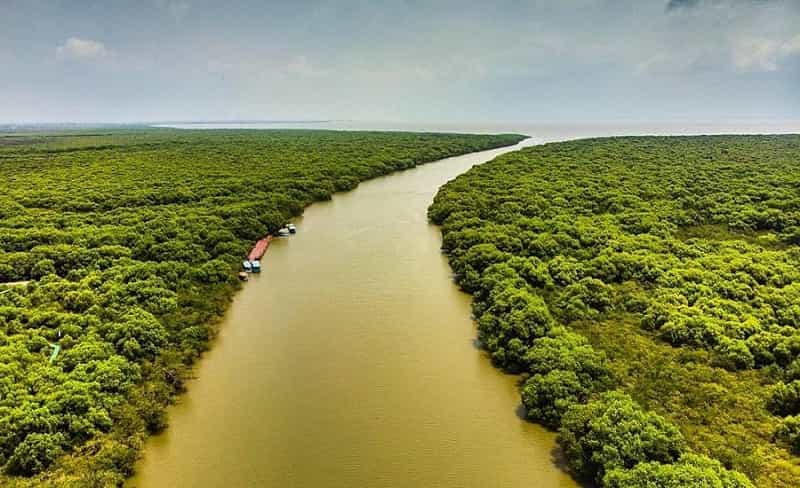
Coringa Sanctuary is situated close to Kakinada port in the East Godavari along the Bay of Bengal. Coringa Sanctuary is located at a distance of (20km) from Kakinada and (70km) from Rajahmundry. This sanctuary is famous for its salt water crocodiles and reptiles. The entire area of the sanctuary is that of the delta of the Godavari River. Coringa Sanctuary is place over an area of 235.70sqkm and is a part of the Mangroves of the Godavari River. This place was adjudged as a sanctuary in the year 1978 in the month of July to preserve extinct mangrove vegetation of the sanctuary. Coringa Sanctuary is a famous tourist destination and most of them come here to capture the glances of the furious looking salt-water crocodiles that rules the water of the forest.
The Artistic Setting
The Mangroves are some of the extinct radical of salt kind plant species, which are found in the subtropical and tropical water regions. This contains an active eco system with a composite association of flora and fauna species of aquatic and terrestrial systems with rich vegetative source that leads to an evergreen type of forest. There are 35 species of mangroves in this sanctuary obscuring the rich shrubs, grasses, herbs and trees.
Mangroves provide with variety of ecological corners for different animal population needed. The parts of trees including branches, fruits, flowers, branches and leaves provides ecological corners to the fauna like insects, birds and mammals. The surface of the soils provides ecological corners to the mollusks, mudskippers and crabs. This Sanctuary has an 18km long sand spit in the Northern east direction, where the endangered species of Olive Ridley Sea turtle nests during the month of January to March every year.
Fauna
The natural habitat of the Coringa Sanctuary is worthy for the salt-water crocodiles. The water gushing inside the forests acts as the lifeline for the habitats of the forest. As your journey adjourns you will find animals like Estuarine, Jackals, Crocodiles, Otters, Fishing Cats, and this place is also a bird lovers delight as you will find birds like Storks, Flamingos, Snipes, Sea Gulls, Ducks, Pelicans and Herons. The major species of this forest are Sonneratia Aegiceros, Avincinia and Rhizophora. It is said that there are 120 species of birds you can avail.
Accommodation
Accommodation facilities are available at the Forest Rest House, Coringa and Rajahmundry.
- Must Read: Fairs and Festivals of Andhra Pradesh
Indira Gandhi Zoological Park
- Situated: Vishakhapatnam, Andhra Pradesh
- Area: 635 acres
- Popular as: Biggest Zoo in the state
- Apt time to explore this place: Any time
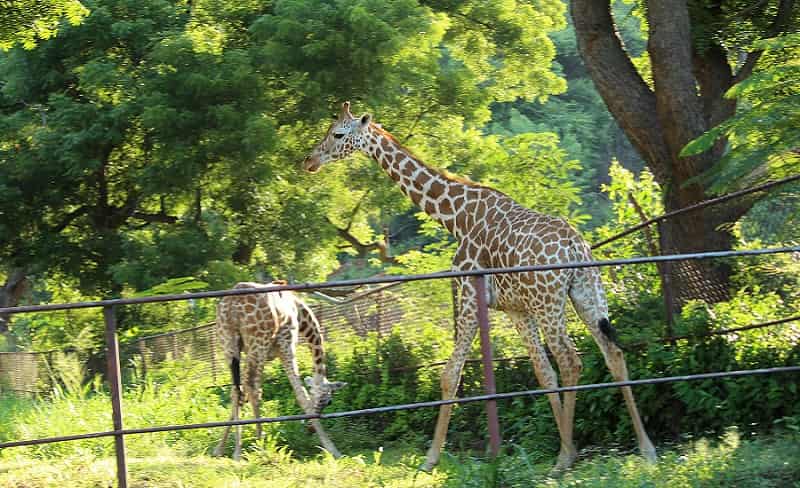
Indira Gandhi Zoological Park is situated in Vishakhapatnam amid the beautiful eastern ghat and is lays by hills and Bay of Bengal. This park was opened for the masses on (May 19th 1977); Indira Gandhi Zoological Park sprawls over an area of 425 acres and is Andhra Pradesh’s largest zoo. It has varied and rich collection of species.
Fauna
The primates include various types of monkeys like Bonnet Monkeys, Langurs, Rhesus Monkeys, and include other unusual zoology like Sacred Baboons, Olive Baboons and Mandrills.
The zoo abodes carnivores like Jaguars, Lesser wolves, Rattle, Jackals, Lions, Panthers, Wild Dogs, Pumas, Hyenas etc. Hippopotamuses are a unique pullover to the Indira Gandhi Zoological Park. You can also spot species of 3 Indian Crocodile in the (Crocodile complex). Reptiles like Water Monitor Lizards, Land Tortoises, Terrapins Pythons, Monitor Lizards, Snakes, etc can also be spotted. Spotted Deer, Barking Deer, Sambar, Elephant, Bison, Nilgai, Thamin Deer, are the compilation in Herbivores segment.
The bird’s segment has diverse collection stating from the Eastern Ghats that is an extraordinary pull over in the park. The group comprises of Pied Horn bills, Peacocks, Budgerigars, lovebirds, Ducks, Grey Pelicans, Painted Storks and Rosy Pelicans.
The organization is also setting up to build enclosure for animals, reptile house and animal house for nocturnal distantly commencing building up (Marine land complex) on the shoreline of Bay of Bengal, area of 100 acres.
The Indira Gandhi Zoological Park is open for visitors all the time, except on Mondays. Timings are: (9.00 am to 5.00 pm.).
Accommodation
Lodging and Boarding is very easily available over here.
Kawal Wildlife Sanctuary
- Situated: Jannaram, (50km) away from Mancherial, Telangana, India
- Area: 893 sqkm
- Apt time to visit: February – May
- Originally known as: Game Reserve
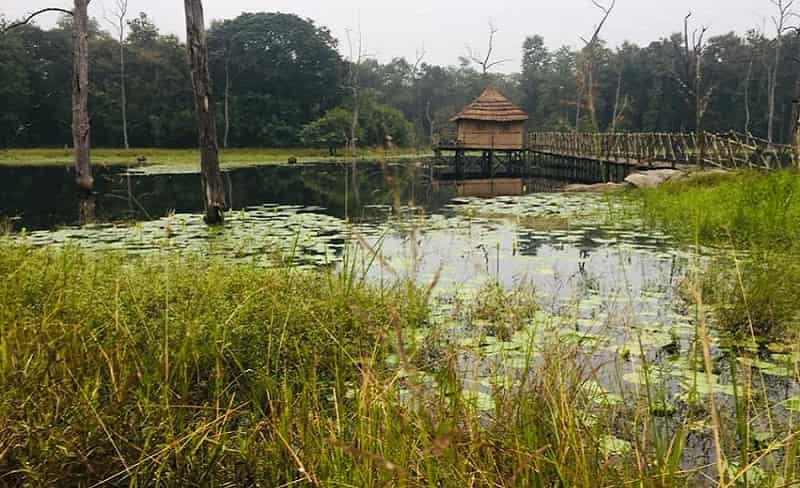
Kawal Wildlife Sanctuary is an apt destination for the numerosity of flora and fauna in the country. This wildlife sanctuary is situated in the Adilabad district, Andhra Pradesh, sanctuary is placed at a distance of (50km) from Mancherial and (260km) from Hyderabad. Kawal Wildlife Sanctuary was founded in the year 1964, to safeguard the jeopardized species in their instinctive habitat. Owing to the biodiversity for the species, the oasis was acknowledged as a wildlife sanctuary.
Kawal Wildlife Sanctuary is a popular spot as tourist comes here to have a look at the natural habitat of the animals and birds. This wildlife sanctuary covers an area of 893sqkm and features dry deciduous forest with trees like bamboo, teak, numerous kinds of herbs, shrubs and trees can be found. Kawal Wildlife Sanctuary houses many animals including Barking Deer, Sloth Bear, Tiger, Nilgai, Sambar, Panther, Cheetal and Indian Bison.
Kawal Wildlife Sanctuary also has a varied range of reptiles like Star Tortoise, Cobra, Python, Monitor Lizard, Crocodile and many more. Now talking about the avian species you can trace birds like Owls, Kingfishers, Partridge, Peacocks, Mynahs, Eagles, and Quails. During the winter season, you can hear the chirping of migratory birds that reverberates in this region. If you are an ardent animal and bird lover, then wait near the rivulet to spot them as they come to drink water.
Winter is the best season for visiting this place nature at its full glory. You can go for jeep safari, as you can have a close look of the wildlife, yet safer and can make this trip a memorable one. Kawal Wildlife Sanctuary is a nice place to feel the thrill and adventure, amalgamated with enjoyment.
Accommodation
Accommodation is easily available at the Forest Guest House.
Krishna Wildlife Sanctuary
- Situated: 80kms away from Vijayawada, close to Avanigadda Village, Andhra Pradesh, India
- Area: 194.81kms
- Apt time to visit this place: October – February
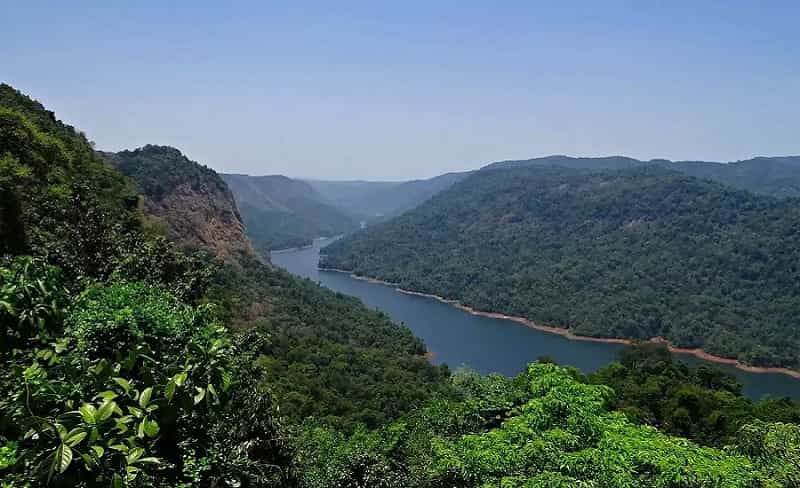
The Krishna Wildlife Sanctuary is an exotic location flecked with abundance of flora and fauna. Placed near the Avanigadda village, Krishna Wildlife Sanctuary straggles over a huge area of 194.81sqkm disseminating in to Guntur and Krishna districts.
Krishna Wildlife Sanctuary is one of the popular mangrove habitats in the state of Andhra Pradesh. The thick mangrove forests nestle on the River Krishna. The Krishna Wildlife Sanctuary houses many species of plants like Spinifex Litoreus, Palmyra, Spinifex Squarrosus, Leptadenia Reticulata, Pongamia Pinnate, Date Palm etc.
Amongst the animals this wild life sanctuary houses animals like Otter Jackal, Spotted Deer, Fishing Cat, Hyena, Sambar, Black Buck, Estuarine Crocodile and Tigers are spotted here.
Krishna Wildlife Sanctuary is the best place for the bird watchers as you can witness birds like Pipits, Indian Roller, Crested Serpent Eagle, Wagtails etc. This sanctuary also has a vivid collection of reptiles like water snakes, garden lizards, cobra, land tortoise etc.
Accommodation
You can stay at the Forest Rest House provided by the Andhra Pradesh Tourism Board at Vijayawada.
Manjira Bird Sanctuary
- Situated: 50km away from Hyderabad, close to Sangareddy, Telangana, India
- Area: 20sqkm
- Apt time to visit this place: October – June
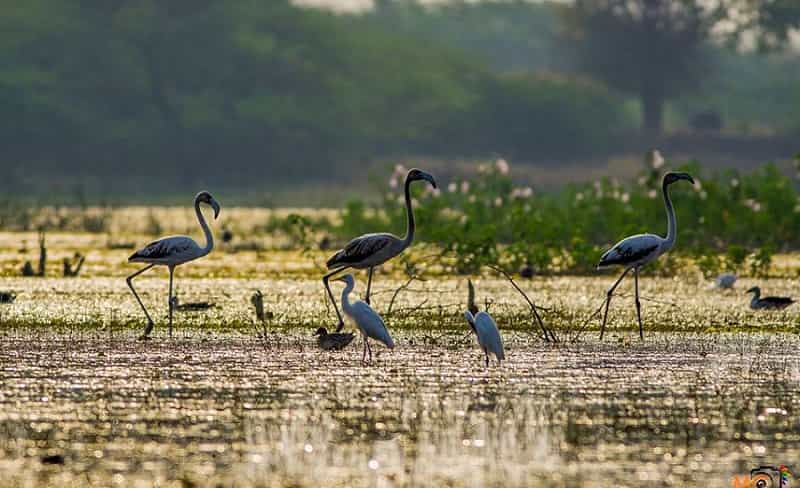
Manjira Bird Sanctuary is placed over an area of 20sqkm and is a home to many animals’ marsh crocodiles and migratory birds.
Manjira Bird Sanctuary also houses an Environmental Education centre with an auditorium, Museum and a library. These things help in understanding the culture of the natural habitat like the maintenance of the balance of ecology and nature conservation and there are guides who explain the facts of nature to the visitors.
You can also enjoy boating around the sanctuary and watch the animals and birds in their natural habitat. Do not forget to carry your camera to capture the beauty of this land. Enjoy the films of animals and birds, which are shown everyday at a fixed time.
The Animals Found Here Include
- Invertebrates: Molluscs, Zoo plankton and Prawns.
- Reptiles: Fresh water Turtles, Marsh Crocodile, Monitor Lizards and cobra.
- Fishes: Murrel, karugu, catla, ech paten, rahu.
- Birds: coots, cormorants, white and black ibises, Open Billed Storks, pochards, painted storks, herons and spoonbills.
Plants found here include Eichornia, Hydrilla, Vallisneria and Pistia.
Accommodation
You can stay at the inspection bungalows available at Sadasivapet and Sangareddy.
Nelapattu Bird Sanctuary
- Situated: 50kms away from Chennai, Nellore District, (Andhra Pradesh), India
- Area: 404kms
- Apt time to visit this place: (October – March)
- Known as: Nelapattu Bird Sanctuary is one of the biggest Pelican Habitats in the entire Southeast Asia.
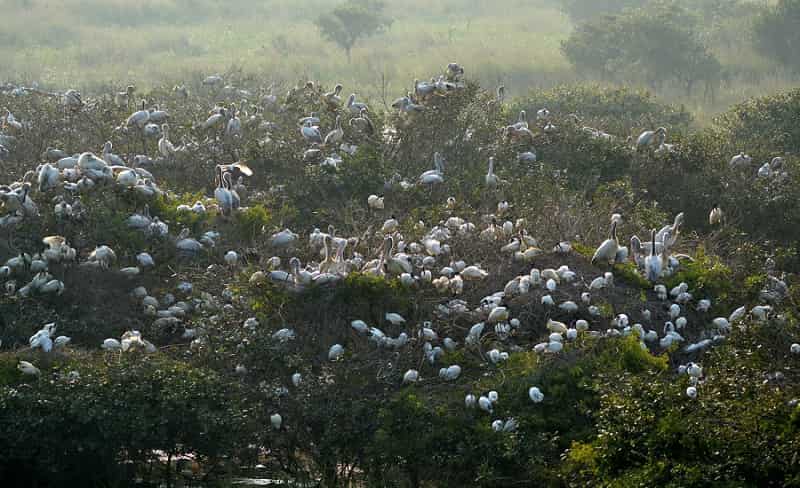
Nelapattu Bird Sanctuary was founded in the year 1976, and is situated on the eastern coast, which is about 20km north of the Pulicat Bird Sanctuary. This place is just 50kms away from the Chennai city. The Nelapattu Bird Sanctuary is known to be the biggest pelican habitats in the entire Southeast Asia. Nelapattu Bird Sanctuary cover a total area of 404kms.
Breeding Centre
Nelapattu Bird Sanctuary acts as a breeding ground for the endangered and rare species like Little Cormorants, Night Herons, Open Billed Storks, White Ibises, Grey Pelicans and Spoon Bills. This sanctuary also has a small freshwater tank with luscious green Barringtonia trees that are spread in the silvery water. The best part about this tank is that it can defy deluge for a long period of time in the tank bed.
The birds that come here for nesting and perching prefer foreshore areas. This is the best place for the migratory birds and more than 1500 Pelicans come here for breeding in the tank bed every year. This place is regarded as an ideal perching place for the birds like ducks, egrets and terns.
Other Attractions
Old and young people of the neighboring villages and Barringtonia Trees are the safeguard for the Nelapattu Bird Sanctuary as they protect the sanctuary from any sort of disturbance. This bird sanctuary also has animals like spotted deer’s, mammals, slender Loris, jackals and reptiles like monitor lizards, snakes and tortoises. Nelapattu Bird Sanctuary also has a Museum, an auditorium, environmental educational centre, library and an audio visual department.
Accommodation
You can stay at PWD Rest House, Sullurpet.
Pocharam Sanctuary
- Situated: 120 kms away from the city of Hyderabad, sprawling over Nizamabad and Medak district, Telangana (India)
- Area: 130sqkm
- Apt time to visit this place: (October – May)
- Established in the year: 1952
- Named after: Pocharam Lake
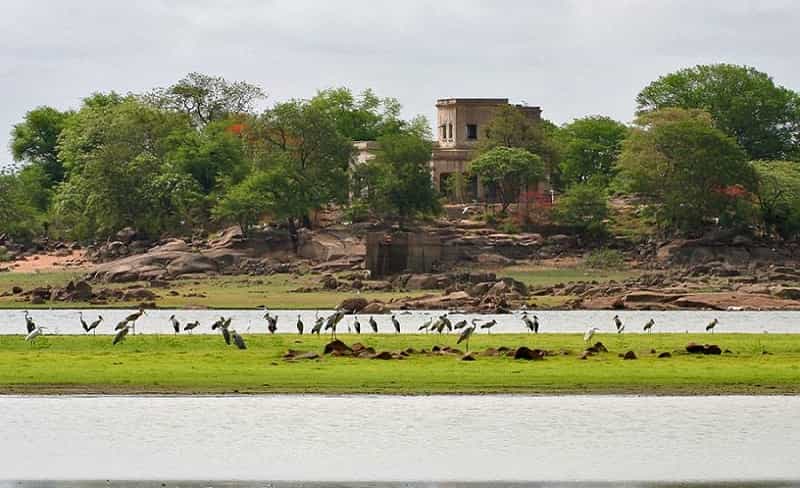
Pocharam Wildlife Sanctuary is situated on the banks of Pocharam Lake and this sanctuary is named after the lake. Pocharam Sanctuary is 120kms away from the city of Hyderabad. This sanctuary sprawls over an area of 130sqkm and is based between Nizamabad and Medak districts. This place was declared as a wildlife sanctuary by the Nizams in the year 1952, because of the fertility in flora and fauna of the place.
The Bird and the animal life
The Pocharam Sanctuary has southern tropical dry deciduous type of forest. There tiny water pools in the sanctuary with low hills. Migratory birds like Brahminy ducks, Bar-headed goose, painted storks etc visit this lake during the winters.
Animals like Sloth Bear, Chinkara, four horned antelope, Leopard, Wild Dog, Jackal, Sambar, Wolf etc are found here. Trees like Mohwa, Chennangi, Tirman, Teak, Chironji, Abnus, Satin, Nallamaddi etc.
Accommodation
Accommodation is easily available at Inspection Bungalows placed at Medak and Pocharam.
Rollapadu Bird Sanctuary
- Situated: 60km away from Kurnool close to Nandikotkuru, Andhra Pradesh, India.
- Area: 614sqkm
- Apt time to visit this place: (October – February)
- Houses: Endangered species of the Great Indian Bustard
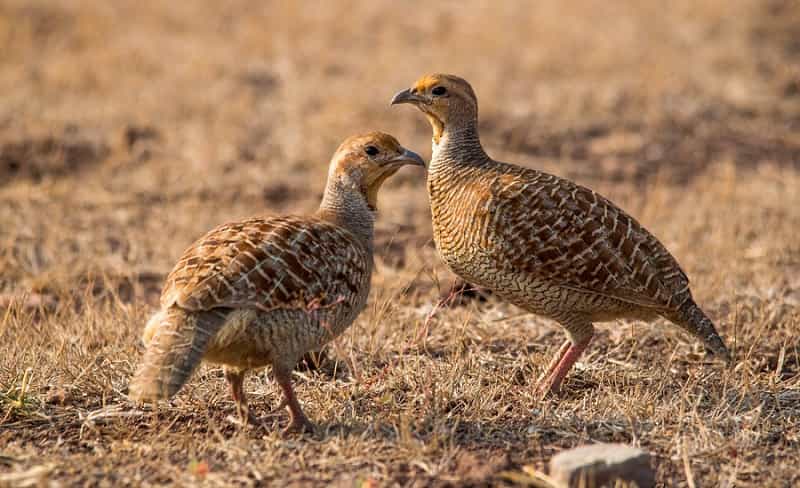
Rollapadu Bird Sanctuary is situated 60km from Kurnool close to Nandikotkuru. It is placed over an area of 614sqkm. Rollapadu Bird sanctuary houses endangered species of Great Indian Bustard and is known to be the best birding place in India. The land is enclosed by dry thorny bushes and open grass. Different kinds of birds, reptiles and animals found here are Sparrows, Indian Cobra, Indian Fox, Black Buck, and Indian roller, Bonnet Macaque, Mynas and Russell’s viper.
Accommodation
You can stay at PWD Guesthouse, Nandikotkuru and Forest Guesthouse, Kurnool.
Sri Venkateshwara National Park
- Situated: Cuddapah district’s Rajampet and also Chittor District’s Bailapudi and Chandragiri
- Covers a total area of: 353 sqkms
- Apt time to explore this place: Any time
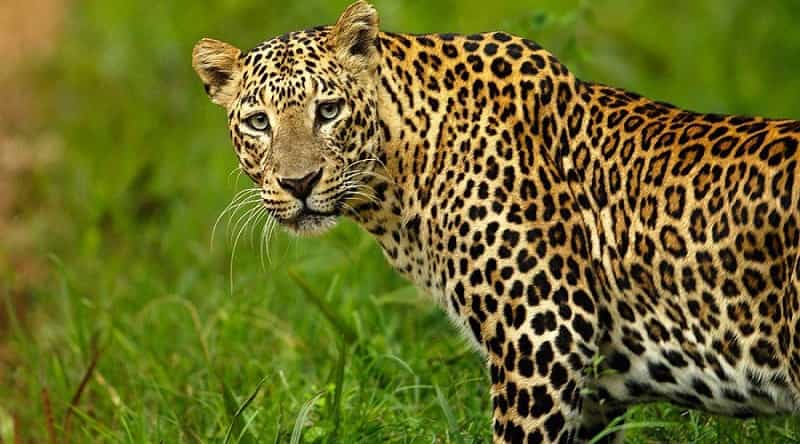
Sri Venkateshwara National Park is situated in Cuddapah district’s Rajampet and also Chittor District’s Bailapudi and Chandragiri. Sri Venkateshwara National Park is the 3rd best and deserving zoo in the entire Andhra Pradesh after the Nehru Zoological Park.
It is an integral division of the (Sri Venkateshwara wild life Sanctuary) and sprawls over an elusive area of (353 sqkm),Tirupati is said to be the home of Lord Venkateshwara, lots of pilgrims throngs to this place and this park was construction with a sacred theme of sacred elephant calf freed from a cyclone known as Venkanna.
You can see the incarnations of Narasimha, Matsya, Varaha and Kurma avatars at the starting point of the park.
Major Attractions
Mrugavani means the abode of herbivorous, Mayuravan means the abode of peafowl and Vruavihar abode of carnivorous along with geese, parakeets, ducks, manias and other birds raptors, swans, flamingos, pelicans. You can access this place via road from the sacred place of Tirupati.
Accommodation
Hotel accommodation and lodging and boarding’s are easily available in Tirupati.
